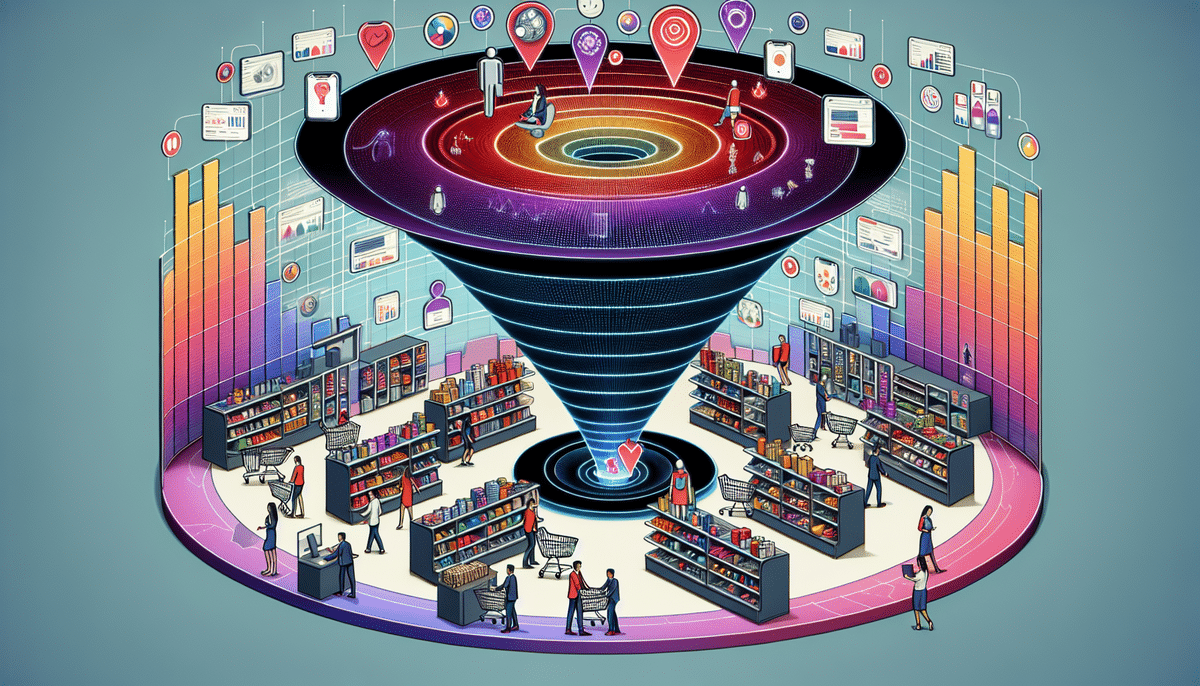Exploring E-Commerce Challenges: Cross-Selling and Upselling Techniques
As an e-commerce business owner, maximizing sales and revenue is a continuous endeavor. Cross-selling and upselling are powerful techniques that can help achieve these goals by encouraging customers to purchase more. In this article, we delve into both strategies, examine the challenges associated with their implementation in e-commerce, and provide practical tips and best practices for successful execution.
Understanding Cross-Selling and Its Importance in E-Commerce
Cross-selling involves offering related or complementary products to a customer who is already considering a purchase. The objective is to encourage the customer to add more items to their cart, thereby increasing the overall value of their order. For example, if a customer is purchasing a new laptop, you could offer them a laptop bag, extra RAM, or an extended warranty.
Benefits of Cross-Selling:
- Increase Average Order Value: Encourages customers to purchase additional items, boosting your revenue. According to Shopify, businesses that implement effective cross-selling strategies can see a significant rise in their average order value.
- Enhance Customer Satisfaction: Provides a one-stop-shop experience, making it easier for customers to find everything they need.
- Outshine Competitors: Offers a broader range of products, helping you stand out and build customer loyalty.
- Move Inventory Efficiently: Helps sell products that may not be performing well on their own by bundling them with popular items.
- Gain Valuable Insights: Provides data on customer behavior and preferences, informing future marketing and product development strategies.
What is Upselling and Its Role in E-Commerce?
Upselling is a strategy similar to cross-selling, but instead of offering complementary products, it focuses on encouraging customers to purchase a higher-priced or more premium version of the product they are considering. For instance, if a customer is looking at a basic computer monitor, you could offer them an upgrade to a higher-quality monitor with more features.
Main Benefits of Upselling:
- Increase Revenue Per Customer: Encourages customers to upgrade to more expensive products, maximizing the value of each sale.
- Improve Customer Satisfaction: Provides customers with better products that meet their needs, leading to higher satisfaction and repeat business.
- Build Trust: Demonstrates a commitment to offering the best possible products, fostering customer trust and loyalty.
Note: It's crucial to use upselling strategies carefully and ethically. Pushing customers to buy products they don't need or can't afford can damage your reputation and lead to negative reviews. Focus on offering relevant and valuable upgrades that enhance the customer's experience.
The Benefits of Cross-Selling and Upselling for E-Commerce Businesses
Implementing cross-selling and upselling strategies can bring numerous benefits to your e-commerce business:
- Increased Average Order Value: Both techniques directly contribute to higher sales per transaction.
- Enhanced Customer Satisfaction: Offering additional relevant options improves the shopping experience.
- Competitive Advantage: Differentiates your business from competitors by providing a more comprehensive product selection.
- Inventory Management: Helps clear out old inventory by bundling less popular items with bestsellers.
- Customer Insights: Gathers data on purchasing patterns, aiding in targeted marketing and product development.
Effective Cross-Selling Strategies to Boost Your E-Commerce Sales
Implementing effective cross-selling strategies can significantly boost your e-commerce sales. Here are some common approaches:
- Product Bundles: Offer bundles containing multiple products that are commonly used together. For example, pairing a laptop with a printer and an external hard drive can be an enticing offer.
- Personalized Recommendations: Use customers’ browsing history and purchase behavior to recommend similar or complementary products. Tools like HubSpot CRM can help in creating personalized experiences.
- Discounts and Promotions: Provide discounts on complementary products. For instance, offer a discount on a matching pair of shoes when a customer purchases a dress.
- Free Shipping Thresholds: Encourage customers to add more items to their cart by offering free shipping on orders that meet a certain value.
Proven Upselling Techniques to Increase Your Average Order Value
Effective upselling techniques can help increase your average order value. Consider the following strategies:
- Understand Customer Needs: Investigate your customers’ needs and concerns to recommend higher-priced or feature-rich products that benefit them.
- Highlight Extra Features: Emphasize the additional features or services that come with a premium product, explaining the long-term value it provides.
- Bundle Deals: Offer bundle deals or package discounts that encourage customers to purchase multiple products at once.
- Personalized Recommendations: Suggest products based on previous purchases or browsing history to increase the likelihood of additional sales.
Overcoming Challenges in Cross-Selling and Upselling
While cross-selling and upselling offer significant benefits, they also present certain challenges:
- Non-Intrusive Presentation: Present cross-selling and upselling options in a way that is organic and not pushy to avoid overwhelming customers.
- Optimal Timing: Determine the right moment to offer additional products to prevent missing opportunities or causing customer frustration.
- Relevance and Quality: Ensure that additional products are relevant and of high quality to enhance the customer’s purchase and experience.
- Managing Options: Avoid offering too many options, which can overwhelm customers and reduce the likelihood of a sale.
Best Practices for Implementing Cross-Selling and Upselling on Your E-Commerce Site
To effectively implement cross-selling and upselling strategies on your e-commerce site, consider the following best practices:
- Personalize Recommendations: Tailor product suggestions based on customers’ browsing data and previous purchases.
- Strategic Placement: Position recommendations in easily visible and customer-friendly areas of your website, such as product pages and the checkout process.
- Offer Incentives: Provide discounts or bundle deals for customers who purchase multiple items to encourage additional sales.
- Continuous Analysis: Regularly analyze customer behavior and sales data to refine and adjust your cross-selling and upselling strategies.
Leveraging Personalization to Enhance Cross-Selling and Upselling
Personalization can significantly enhance the effectiveness of your cross-selling and upselling initiatives:
- Utilize Customer Data: Leverage browsing data and previous orders to understand customer preferences and provide relevant offers.
- Segment Your Customers: Group customers based on their behavior and preferences to tailor offers to specific segments. For example, offer running socks or fitness trackers to customers who have previously purchased running shoes.
- Strategic Offer Frequency: Avoid bombarding customers with too many offers. Focus on providing personalized offers that are genuinely relevant and valuable.
Measuring the Success of Your Cross-Selling and Upselling Campaigns
To ensure continual improvement of your cross-selling and upselling efforts, it’s essential to measure their success using key metrics:
- Conversion Rate: Track the conversion rate of upsell and cross-sell products to gauge their effectiveness.
- Average Order Value (AOV): Monitor AOV to see how these strategies impact your overall sales.
- Customer Lifetime Value (CLV): Measure CLV to understand the long-term impact of your campaigns on customer loyalty and revenue.
- Repeat Purchase Rate: Assess the percentage of customers who make repeat purchases after being cross-sold or upsold.
- Referral Rates: Track the number of referrals generated from your cross-selling and upselling efforts to evaluate their broader impact.
Ethical Considerations in Cross-Selling and Upselling
When implementing cross-selling and upselling strategies, it’s crucial to consider the ethical implications:
- Transparency: Clearly communicate what customers are buying and how the additional products complement or enhance their existing purchase.
- Honest Pricing: Be transparent about pricing to avoid deceptive practices that could mislead customers.
- Relevance: Ensure that the products you suggest are genuinely relevant and add value to the customer’s purchase.
Innovations in AI-Powered Cross-Selling and Upselling Technologies
AI-powered technologies are revolutionizing cross-selling and upselling strategies in e-commerce:
- Personalized Product Recommendations: Utilize machine learning algorithms to offer highly personalized product suggestions based on customer behavior.
- Chatbots: Implement AI-driven chatbots that can engage customers in real-time, offering tailored product recommendations and assistance.
- Predictive Analytics: Use AI to predict customer behavior and preferences, allowing for proactive and targeted upselling and cross-selling opportunities.
Industry Case Studies: Successful Cross-Sell and Upsell Implementations
Many e-commerce businesses have successfully implemented cross-sell and upsell strategies to boost their sales and revenue:
- Amazon: Utilizes a combination of personalized product recommendations and bundled purchases to effectively upsell and cross-sell products to customers. Their recommendation engine, which accounts for a significant portion of their sales, is a prime example of successful implementation. Learn more about Amazon's strategy.
- Netflix: While primarily a streaming service, Netflix employs upselling techniques by offering premium subscription tiers with additional features such as higher streaming quality and multiple simultaneous streams. Read more about Netflix's approach.
- Apple: Apple excels in upselling by promoting higher-end versions of their products with more features, such as the iPhone Pro models. Their emphasis on quality and added features encourages customers to opt for more expensive options. Explore Apple's upselling tactics.
Future Trends in E-Commerce Sales Techniques: Cross-Selling and Upselling
The future of e-commerce sales techniques is poised to focus on increased personalization and customer-centric approaches to cross-selling and upselling:
- Enhanced Data Utilization: Leveraging more sophisticated data analytics to understand customer behavior and preferences deeply.
- Interactive Shopping Experiences: Creating more engaging and interactive shopping environments that naturally incorporate cross-selling and upselling opportunities.
- Integration with Emerging Technologies: Utilizing technologies like augmented reality (AR) and virtual reality (VR) to create immersive product experiences that facilitate upselling and cross-selling.
Conclusion: Mastering Cross-Selling and Upselling Techniques in E-Commerce
Cross-selling and upselling are powerful tools for increasing your e-commerce sales and revenue. To be successful, focus on providing customers with relevant and personalized offers, understanding their needs and preferences, and seamlessly integrating upsell and cross-sell opportunities into the buying journey. When executed correctly, these strategies can lead to increased average order value, improved customer satisfaction, and enhanced brand loyalty.




















